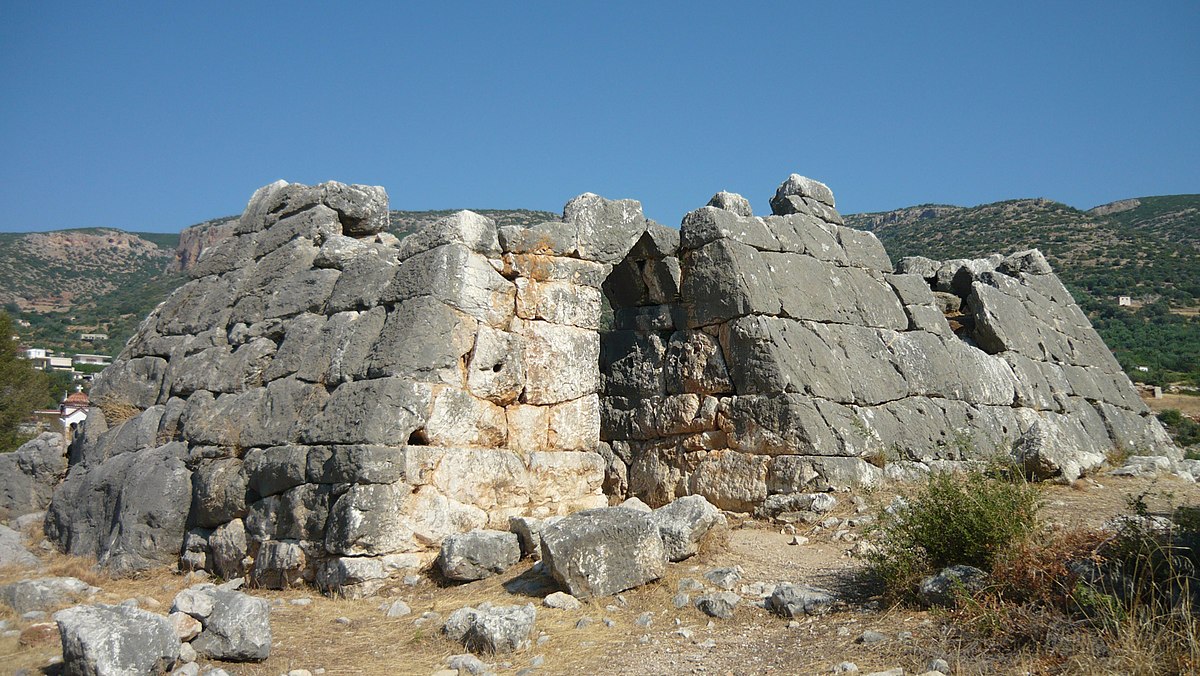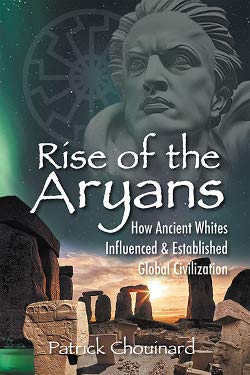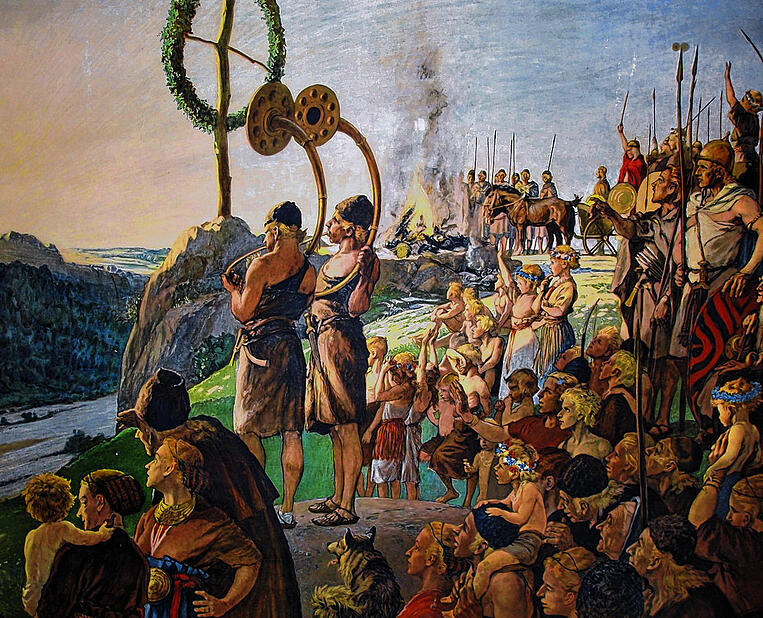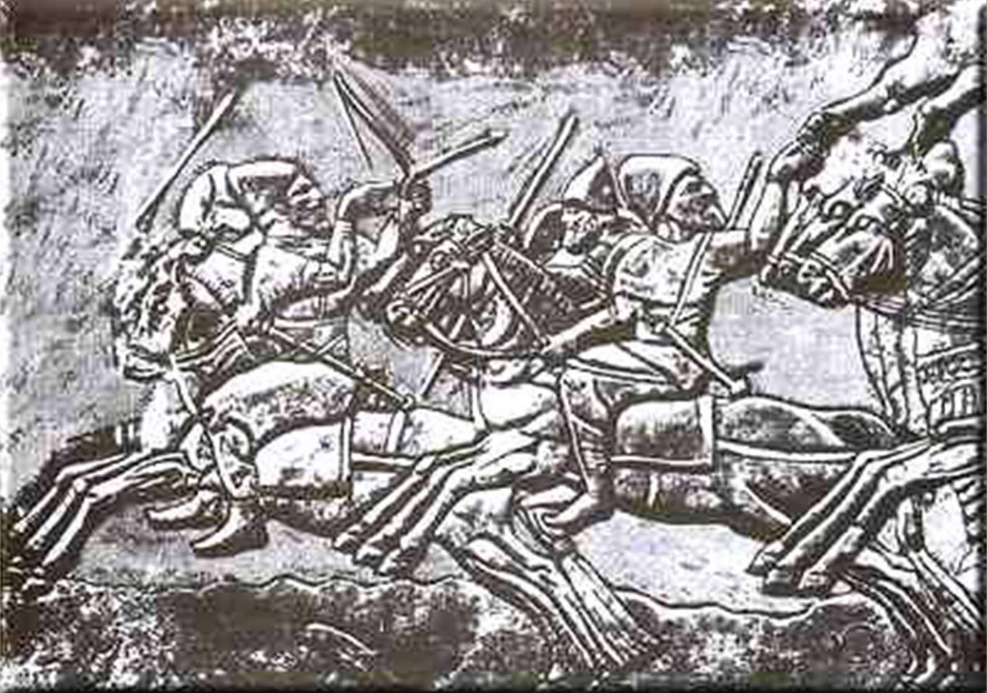Situated at Hellenicon, the Pyramid of Argos is an intriguing historical structure that tributes to Greek and ancient Aryan history. While not as renowned as the pyramids of Egypt, the Pyramid of Argos possesses considerable cultural and archaeological significance. It is one of the oldest structures in Europe, and a testimony to a long vanished white civilization that once thrived in ancient mainland Greece before the rise of the Classical era.
In the northern Peloponnese region of Greece, the Pyramid of Argos, alternatively referred to as the Pyramid of Hellinikon or the Pyramid of Kenchreai, is located near the present-day town of Argos. Some archaeologists trace the origins of this phenomenal structure to the 4th century BCE, namely during the Hellenistic period. However, some scholars propose that its historical roots may extend even older, tracing back to the Mycenaean or Archaic periods. The most recent attempt at dating the pyramid left archaeologists astounded. According to those results, it dates back to 2725 BCE, which makes it older than the pyramids of Giza and about the same age as the megalithic British site of Stonehenge in Wiltshire, England.
The precise objective of the pyramid continues to be a topic of contention among scholars in history and archaeology. While specific ideas indicate that it functioned as a burial site for a notable figure or as a commemorative structure for a triumph in warfare, alternative viewpoints posit religious or astronomical purposes. For millennia, the Pyramid of Argos has captivated the interest of both scholars and visitors, irrespective of its first intended function.
Architecture and Design
The Pyramid of Argos is a remarkable edifice made of stone, including a square foundation and reaching a height of around 27 meters (89 feet). The structure is created using sizable limestone blocks that are meticulously trimmed and assembled without incorporating mortar. The pyramid initially had a sleek exterior, but a significant portion of its facade was subsequently eroded by the effects of time and weathering.
To date, minimal archaeological excavations have been done to study the pyramid’s interior, leaving it unexplored. The structure is hypothesized to encompass one or many rooms, potentially functioning as burial chambers or accommodating additional ceremonial or functional components. Further insights about the internal structure and purpose of the pyramid may be unveiled through more research and excavations.
Potential Objectives and Explanations
Numerous ideas have been posited about the function of the Pyramid of Argos, which can be attributed to its mysterious form and the absence of conclusive historical evidence. One prevailing hypothesis posits that it functioned as a burial site for a notable figure, such as a regional sovereign or military commander. The pyramid’s design and scale align with burial monuments observed in several regions of the ancient globe.
An alternative perspective suggests that the pyramid held religious importance, potentially functioning as a temple or sanctuary designated to venerate a deity or deities prevalent in the area. Scholars have speculated on the potential astronomical significance of the pyramid’s orientation, suggesting that it may have been aligned with celestial occurrences or functioned as a calendar marker.
Moreover, the proximity of the pyramid to the historical port of Kenchreai has prompted certain scholars to posit potential maritime or navigational purposes. The pyramid may have functioned as a prominent geographical feature for seafarers traversing the coastal waters of the Peloponnese, facilitating their navigation and direction.
This topic holds cultural and historical significance.
The Pyramid of Argos possesses considerable cultural and historical significance within the broader framework of ancient Greek civilization. It serves as a concrete testament to the ancient Greeks’ architectural and engineering expertise, demonstrating their capacity to build grand buildings with accuracy and proficiency.
Moreover, the pyramid is a central subject of scholarly examination and discovery, stimulating continuous scientific inquiry and exploration into its origins, objectives, and importance. Archaeological digs and investigations persistently illuminate the enigmas surrounding the pyramid, providing fresh perspectives on the lifestyles and convictions of its builders.
The pyramid possesses significant cultural significance and is a prominent tourist destination. It attracts tourists from many parts of the globe who are captivated by its ancient magnificence and ponder its mysterious past. As the preservation and study of the pyramid persist, it will unquestionably continue to represent Greece’s abundant cultural legacy and a captivating subject for future generations.

Patrick Chouinard is a distinguished expert on European history and authority on the White race and its roots. He has a BA in Global History and European Studies and currently is seeking an MA in Ancient and Classical History. He has authored six books and is a regular contributor to notable publications such as Ancient American magazine, The Barnes Review, Renegade Tribune, and Nexus. His expertise spans various facets of European history, showcasing a deep understanding and commitment to disseminating historical knowledge.













